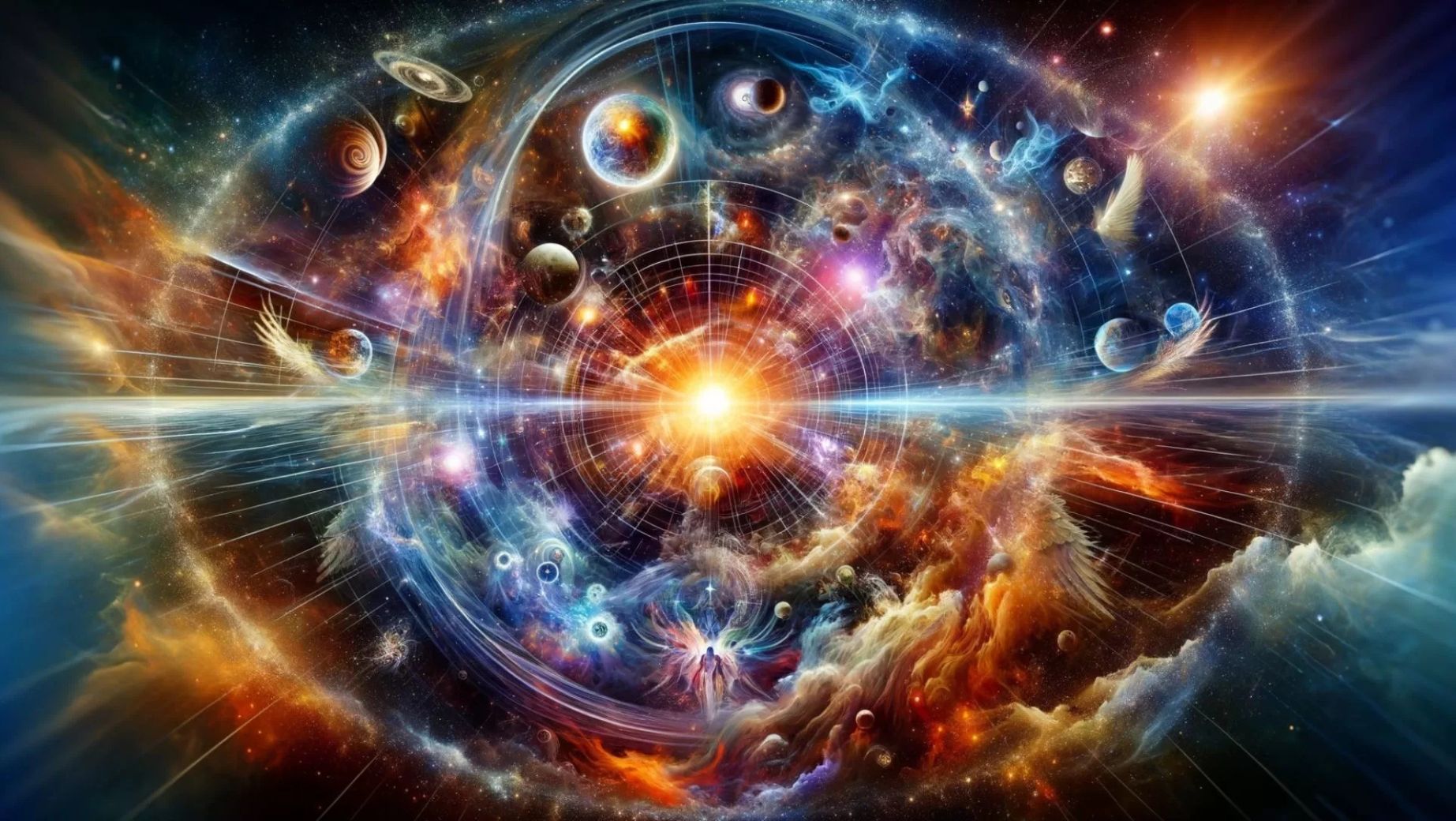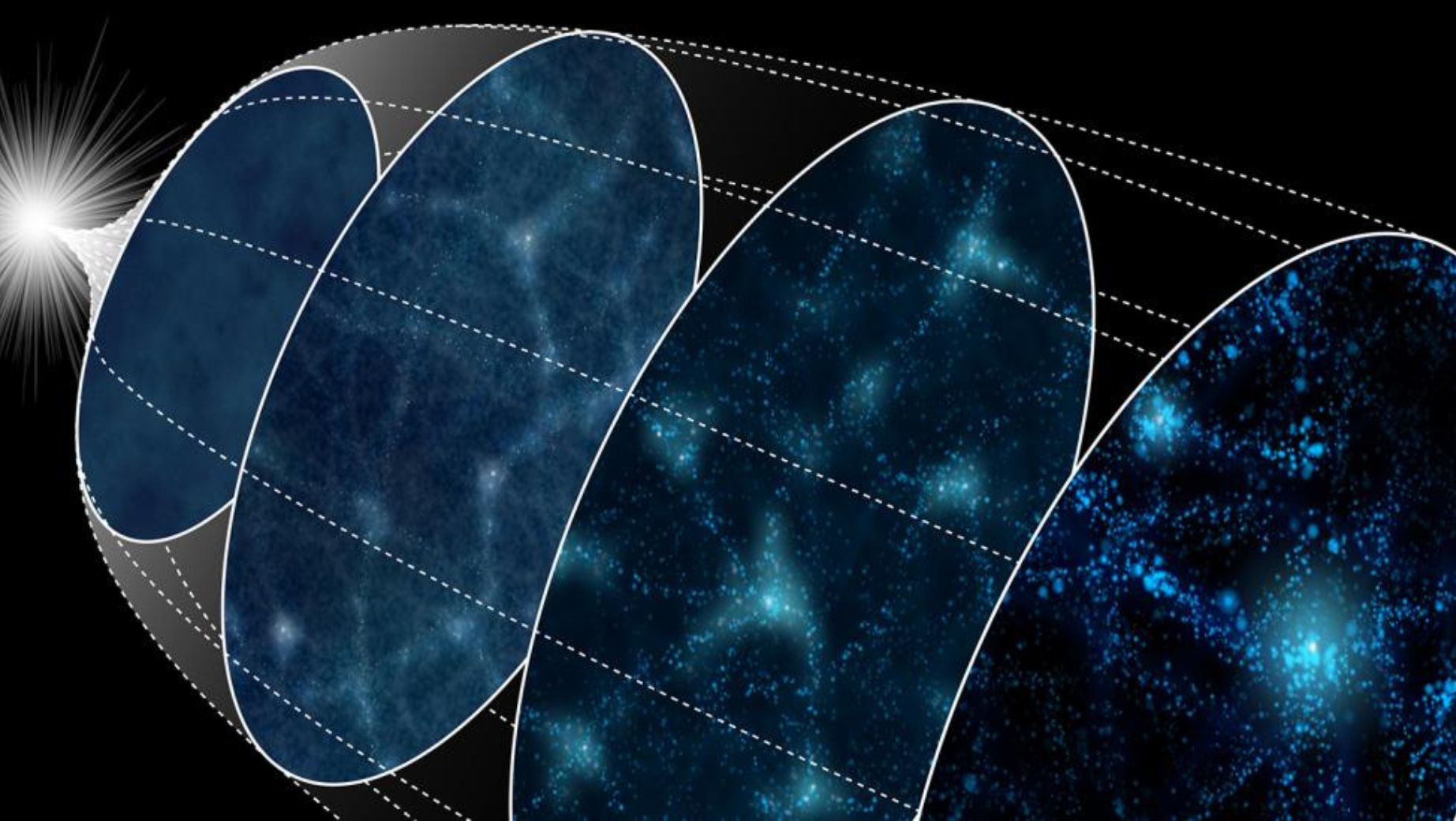Have you ever wondered how our universe expanded so rapidly in its infancy? Enter cosmic inflation—a groundbreaking concept that offers fascinating insights into the universe’s early moments. Cosmic inflation refers to a brief period of exponential expansion, occurring just after the Big Bang. While the Big Bang theory explains the universe’s origins, it leaves some questions unanswered. For instance, how did the universe become so uniform and smooth? Cosmic inflation provides a compelling solution, transforming our understanding of cosmic history. Ready to explore the mysteries of inflation? Let’s dive into what happened in those first crucial moments!
The Prelude: Understanding the Big Bang Theory

The Big Bang theory is the leading explanation for the universe’s origin. It suggests that about 13.8 billion years ago, the universe began as a singular point, infinitely dense and hot. From this initial singularity, the universe expanded rapidly, cooling and forming matter over time. This expansion continues today, as galaxies move away from each other.
Before inflation, the universe was incredibly small and dense. In this state, it was filled with high-energy particles and radiation. As it began to expand, the universe underwent significant changes, transitioning from a hot plasma to a cooler mixture of atoms. However, the Big Bang theory alone struggles to explain some observed features, like the uniformity of the universe.
This is where cosmic inflation comes into play. It proposes that shortly after the Big Bang, the universe underwent a brief period of exponential growth. This rapid expansion helped smooth out irregularities, leading to the even distribution of matter we see today. Understanding these concepts sets the stage for exploring the mystery of cosmic inflation.
What is Cosmic Inflation?
Cosmic inflation is a theory that explains a critical phase in the early universe. It suggests that within a tiny fraction of a second after the Big Bang, the universe expanded exponentially. This rapid expansion stretched space itself, causing distances between points to increase dramatically. Imagine inflating a balloon; the surface stretches and expands, much like the universe did.
This inflationary period lasted only about 10−3610^{-36}10−36 to 10−3210^{-32}10−32 seconds. During this brief moment, the universe grew from subatomic sizes to about the size of a grapefruit. This extraordinary growth helped to solve several puzzles of the Big Bang theory. For example, it explains why the universe appears so uniform, even across vast distances.
Moreover, cosmic inflation smoothed out any irregularities in the early universe. Variations in density, which could have led to clumping and structure, were stretched and diluted. As a result, the cosmos we observe today, with its galaxies and clusters, formed from tiny quantum fluctuations created during this period. Understanding cosmic inflation helps us grasp the evolution of the universe from its earliest moments.
Key Theories Behind Cosmic Inflation
Several leading models explain cosmic inflation, each offering unique insights into how the universe expanded so rapidly. One of the most popular models is the original inflationary model proposed by Alan Guth in 1981. This theory suggests that a field called the inflaton field drove the rapid expansion. As the inflaton field released energy, it caused space to stretch, leading to inflation.
Another influential model is the eternal inflation theory. This concept posits that inflation can continue indefinitely in certain regions of the universe. While some areas stop inflating and evolve into galaxies, other regions keep expanding forever. This leads to a “multiverse,” where countless bubble universes coexist.
The potential mechanisms driving inflation often involve exotic physics. For example, scalar fields, like the inflaton, can create a repulsive gravitational effect, causing rapid expansion. Other theories suggest that quantum fluctuations in the vacuum could trigger inflation. These models continue to be tested through observations, particularly by studying the cosmic microwave background and large-scale structures. Understanding these theories helps us grasp the complex dynamics of the early universe.
The Role of Quantum Fluctuations

Quantum fluctuations played a crucial role in shaping the early universe. These fluctuations are temporary changes in energy that occur at the quantum level. They arise from the uncertainty principle, which states that certain pairs of physical properties cannot both be known precisely at the same time. In the context of the early universe, these fluctuations created tiny variations in energy density.
As inflation began, these quantum fluctuations were stretched across vast distances. This expansion amplified the minute differences in density throughout the universe. Some areas became slightly denser, while others remained less dense. These variations laid the groundwork for the formation of cosmic structures.
After inflation ended, the universe cooled and matter began to coalesce. Regions of higher density attracted more matter due to gravity, leading to the formation of stars, galaxies, and clusters. Conversely, less dense regions experienced less gravitational pull, resulting in vast cosmic voids. Thus, quantum fluctuations were essential in transforming the uniform early universe into the rich tapestry of structures we observe today.
Evidence Supporting Cosmic Inflation
Observational evidence for cosmic inflation primarily comes from the Cosmic Microwave Background (CMB). The CMB is the afterglow of the Big Bang, filling the universe with faint radiation. Detected in the early 1990s, this radiation provides a snapshot of the universe when it was just 380,000 years old. The CMB reveals crucial information about the early conditions of the universe.
One significant feature of the CMB is its anisotropies, or tiny temperature variations. These anisotropies represent fluctuations in density and temperature, which correspond to the quantum fluctuations that occurred during inflation. They indicate how matter was distributed in the early universe. Analyzing these fluctuations helps scientists understand the underlying physics of inflation.
Data from missions like the Wilkinson Microwave Anisotropy Probe (WMAP) and the Planck satellite has provided detailed maps of the CMB. These maps confirm the predictions of inflationary models, showing a flat universe with slight deviations. The patterns and distribution of anisotropies align with theoretical expectations. This strong correlation lends significant support to the theory of cosmic inflation and its role in shaping the universe’s structure.
Challenges and Controversies
Despite its popularity, inflationary theory faces several critiques. One major challenge is the lack of direct evidence for the inflaton field, which is central to many inflation models. Critics argue that without detecting the inflaton or its effects, the theory remains speculative. Additionally, some scientists question whether inflation can fully explain the observed uniformity of the universe.
Alternative theories have emerged to address these concerns. One notable alternative is the cyclic model, which proposes that the universe undergoes infinite cycles of expansion and contraction. In this model, the universe experiences periodic Big Bangs, eliminating the need for inflation. Another alternative is the quantum gravity approach, which seeks to merge quantum mechanics and general relativity, potentially offering new insights into the universe’s early moments.
These alternatives have significant implications for our understanding of cosmology. If proven correct, they could reshape our perspective on cosmic evolution and the nature of the universe. However, current observations continue to support inflation, making it a prevailing theory in modern cosmology. Ongoing research aims to clarify these debates and deepen our understanding of the universe’s origins.
Impacts on Our Understanding of the Universe
Cosmic inflation has fundamentally changed how we view the evolution of the universe. It provides a framework for understanding the uniformity and structure observed in the cosmos today. By explaining the rapid expansion that occurred after the Big Bang, inflation clarifies how galaxies, stars, and other structures formed from tiny fluctuations. This insight helps us connect the early universe to the vast, complex cosmos we see now.
Inflation also addresses several major puzzles in cosmology. For instance, it explains the flatness problem, which questions why the universe appears so geometrically flat on a large scale. Additionally, inflation solves the horizon problem by providing a mechanism for regions of the universe to become causally connected despite being far apart.
In modern cosmology, inflation remains a cornerstone theory. It informs our understanding of cosmic microwave background radiation and guides current research. Scientists continue to explore inflation’s implications, seeking to refine existing models and develop new theories. Ultimately, inflation enhances our comprehension of the universe’s origins and its ongoing evolution, making it a vital area of study in astrophysics.
Current Research and Future Discoveries

Ongoing experiments are crucial for advancing our understanding of cosmic inflation. Projects like BICEP (Background Imaging of Cosmic Extragalactic Polarization) aim to detect gravitational waves from the inflationary period. These waves, if found, would provide strong evidence supporting inflation. The Planck satellite has also been pivotal in mapping the Cosmic Microwave Background (CMB) with unprecedented precision, revealing detailed anisotropies.
Researchers are focused on understanding the implications of their findings. The CMB data collected by Planck has helped refine inflationary models, but some results have raised new questions. Discrepancies between observed temperature fluctuations and theoretical predictions could suggest modifications to current inflation theories.
Future discoveries may come from upcoming missions and advancements in technology. Projects like the Simons Observatory and the PICO experiment are set to enhance our ability to study the CMB and its polarization. Discovering signatures of gravitational waves or confirming the inflaton field’s properties could validate inflation. Conversely, finding evidence contradicting inflation could lead to revolutionary changes in cosmology. Ongoing research promises to deepen our understanding of the universe’s origins and the validity of inflationary theory.
Conclusion: Cosmic Inflation
In summary, cosmic inflation offers a compelling explanation for the universe’s rapid expansion in its earliest moments. Key concepts include the role of quantum fluctuations, evidence from the Cosmic Microwave Background, and ongoing research efforts. Despite its popularity, inflationary theory faces challenges and alternative models that provoke further inquiry. Understanding cosmic inflation is crucial for unraveling the universe’s origins and evolution. Continued exploration of the early universe through advanced experiments and observations holds the potential for groundbreaking discoveries. As we delve deeper, we may uncover new insights that reshape our understanding of the cosmos and its mysteries.
FAQs
What sparked the idea of cosmic inflation?
The idea of cosmic inflation emerged in the 1980s as scientists sought to resolve issues in the Big Bang theory, such as the horizon and flatness problems. Alan Guth proposed that a rapid expansion occurred in the universe’s earliest moments, leading to a more uniform and isotropic cosmos.
How does cosmic inflation relate to dark energy?
While cosmic inflation and dark energy are distinct concepts, both involve the expansion of the universe. Inflation describes a rapid growth phase shortly after the Big Bang, while dark energy is believed to drive the current accelerated expansion of the universe. Understanding their relationship is a key area of research.
What are the implications of cosmic inflation for the multiverse theory?
Cosmic inflation supports the idea of a multiverse, where different regions of space undergo inflation at different times. This results in numerous bubble universes with varying physical laws. The multiverse concept challenges traditional views of a single universe and raises questions about its implications for our understanding of reality.
Can cosmic inflation be tested through future observations?
Yes, cosmic inflation can be tested through future observations, particularly by studying the polarization of the CMB and searching for gravitational waves. Upcoming experiments like the Simons Observatory and PICO aim to provide data that could confirm or refute aspects of inflationary theory.
What happens if future discoveries contradict inflation?
If future discoveries contradict inflation, it could lead to significant changes in our understanding of the universe’s origins. Scientists may develop new theories to replace or modify inflationary models, prompting a reevaluation of cosmological principles and our view of cosmic evolution. This would invigorate research and discussions in cosmology.

